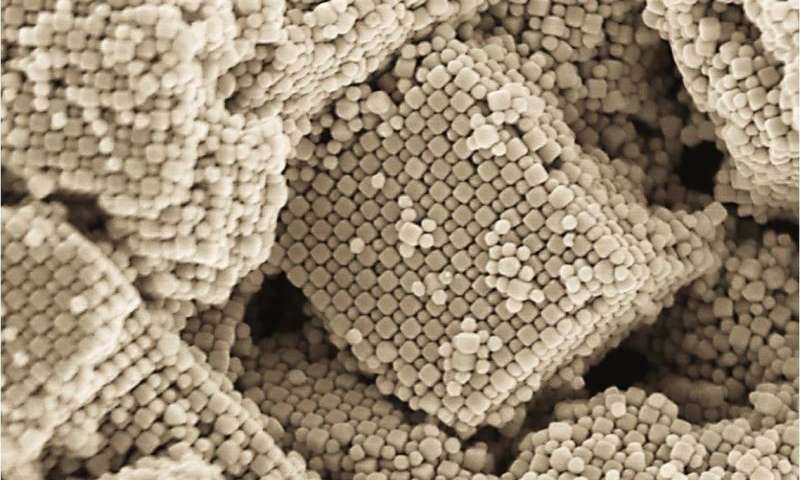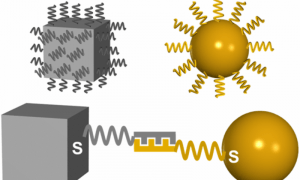New DNA-Linked Superlattices of Nanoparticles Assembly Strategy Using Directional Binding

Scientists at the US Department of Energy’s (DOE) Brookhaven National Laboratory constructed well-defined 3D superlattices of spheres and blocks using polyhedral nanoblocks of either cubes or octahedrons via shape-induced directional binding facilitated by pairing of complementary strands of DNA. This new strategy opens possibilities towards designing 3D nanostructured materials from functional nanocomponents.
Bonding directionality is determined by the coordination of anisotropic polyhedral blocks with isotropic spherical nanoparticles through attractive facets. This mutual attraction of heterogeneity is critical for suppression of phase separation, which is also achieved by strong DNA interactions via DNA complementary. The softness of DNA shell is also responsible for accommodating the difference in particle curvatures, and is crucial in promoting ordered phases. However, excessive softness may lead to unnecessary particle freedom that could interfere the formation of an ordered lattice. The formation of the DNA-linked superlattice is essentially the result of the constraint of the high-order-symmetry of spheres by the low-order-symmetry of polyhedral blocks. As such, DNA plays a central role as local connections for the hetero-shaped nanoparticles.
This new approach will lay the groundwork for designing predictable 3D nanostructured materials for various applications including catalysis, medicine and energy technologies.

Self-assembly of the different nanoblocks through attractive facets and strong DNA attractions. Credit: Brookhaven National Laboratory

Binding of polyhedral nanoblocks and spheres are facilitated by pairing of complementary DNA. Credit: Brookhaven National Laboratory
Source: Phys.org
